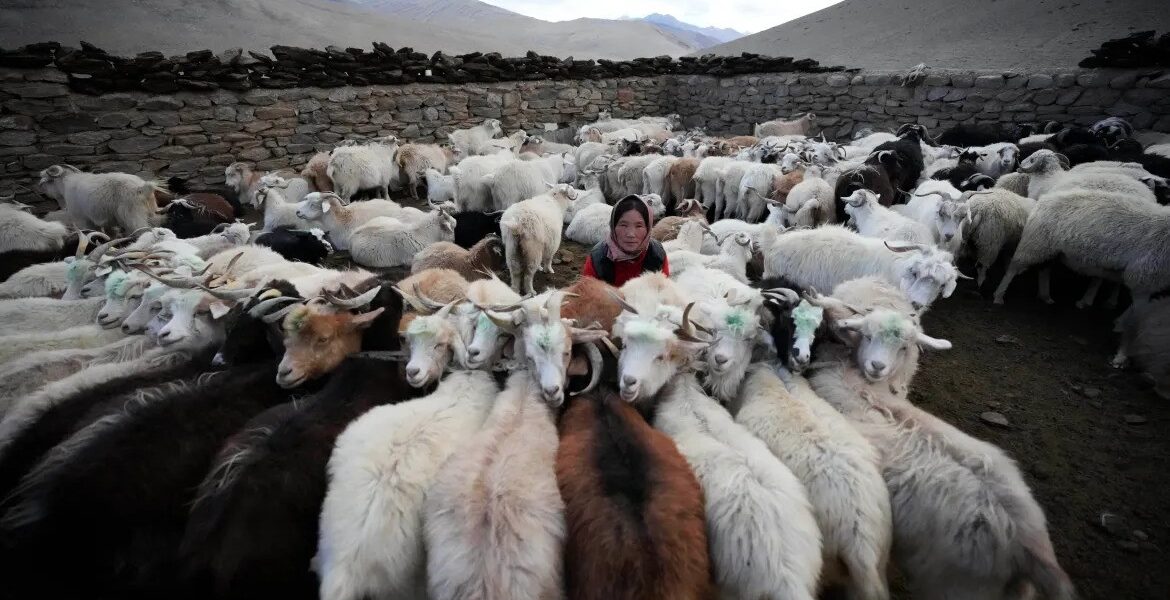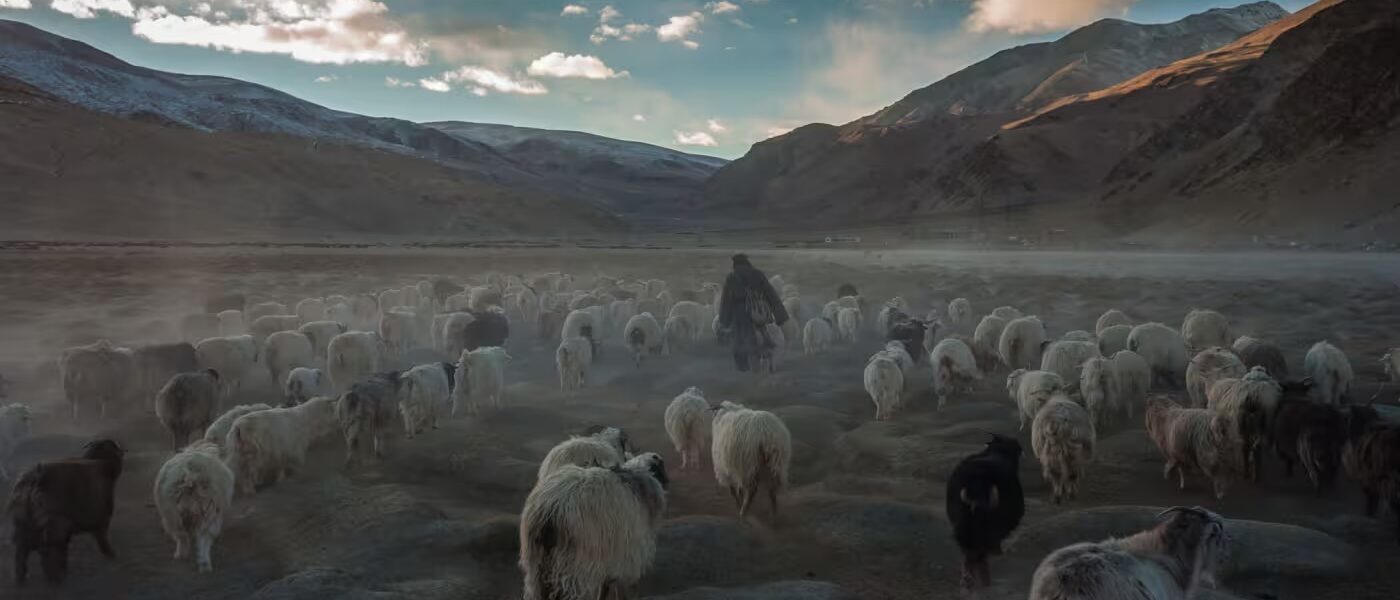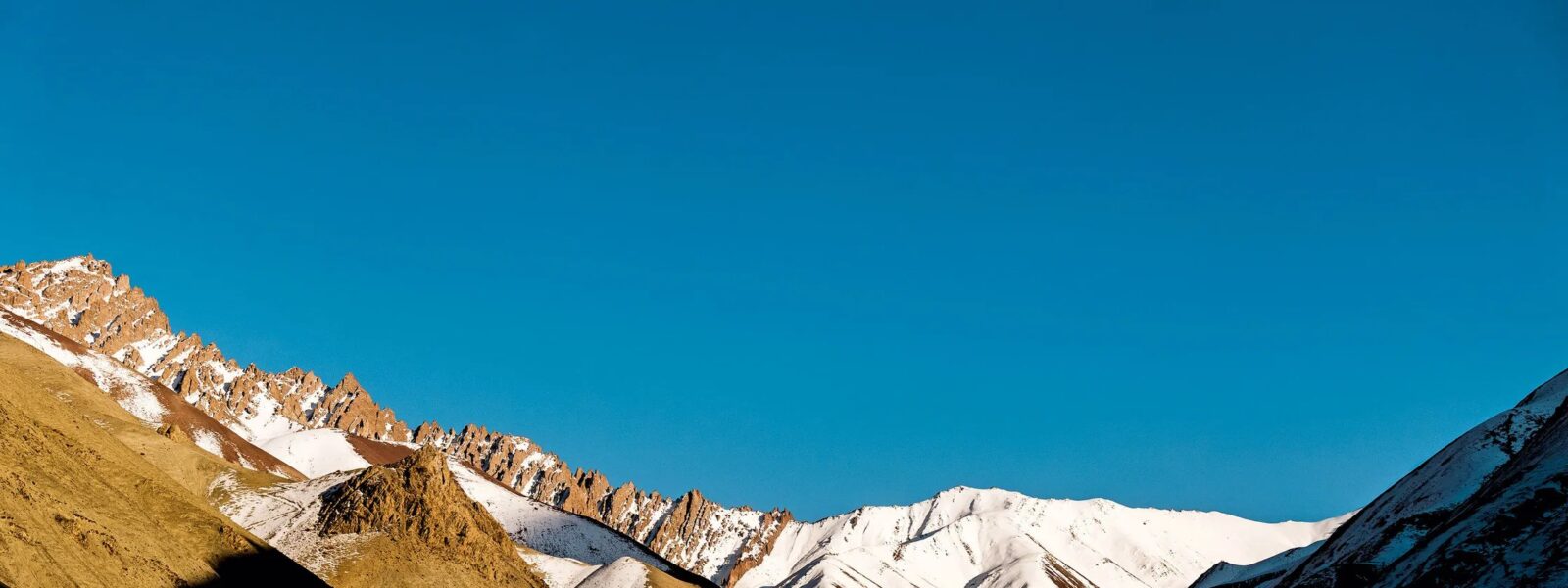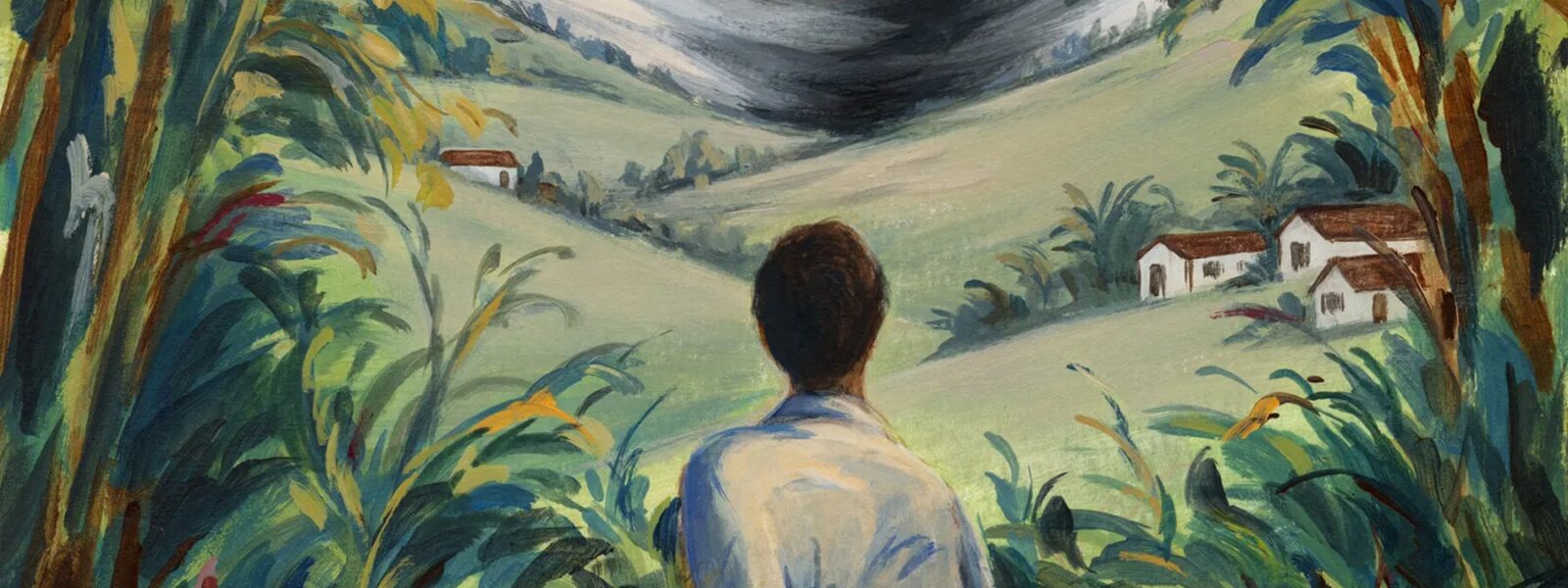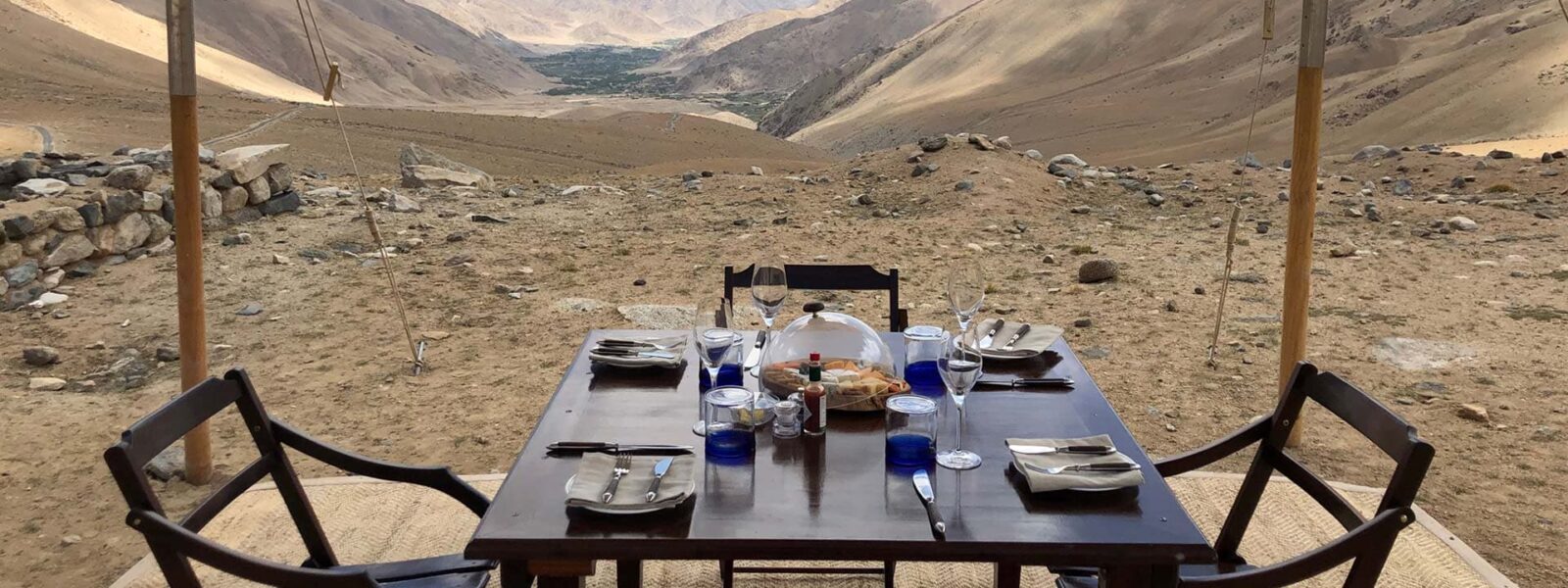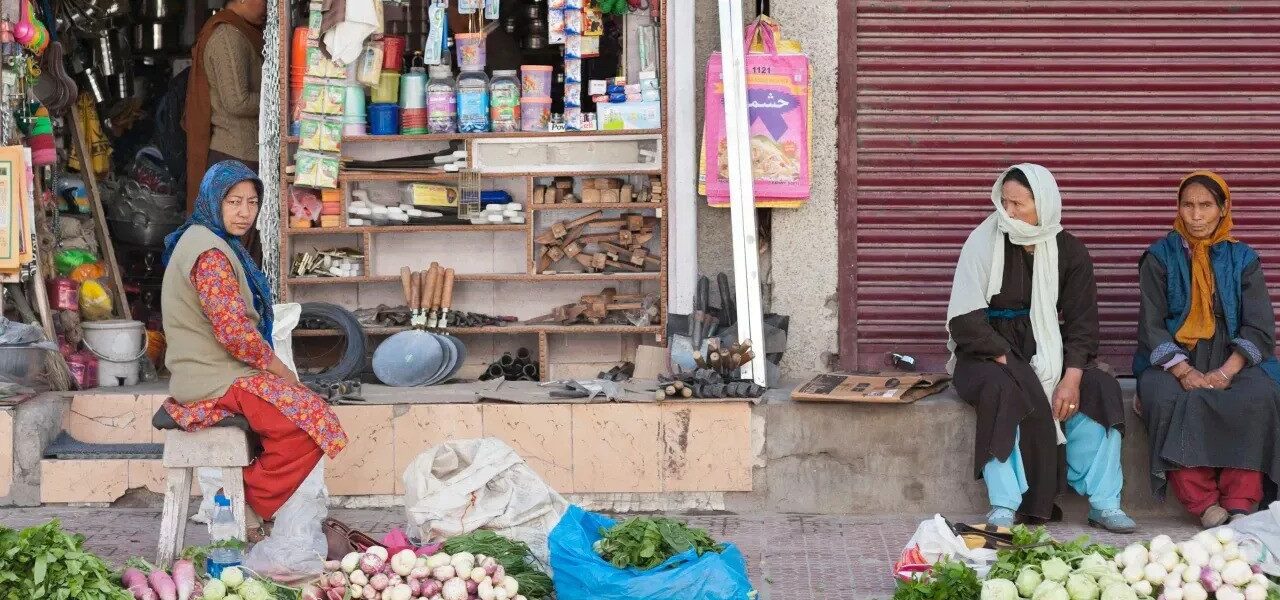I. A Land Where Silence Speaks Louder Than Words
There is a kind of silence in Ladakh that hums softly beneath the surface of things — a stillness shaped by the wind, the mountains, and the whispers from the monastery. Not the silence of absence, but of presence — a quiet so deep, so ancient, it feels like the landscape itself is meditating. When I first stepped off the plane in Leh, breath caught in my chest not just from the altitude, but from the sensation of entering another realm—one that moves at the rhythm of prayer wheels and mountain winds.
I had come not in search of adventure or thrills, but something subtler. A whisper. A moment of connection. And as I looked out across the sun-warmed walls of Leh’s old town, where mud-brick homes cling to the slopes and fluttering prayer flags stitch the sky together, I felt it. The hush. The invitation to listen.
Ladakh is often described as a land of high passes and stark beauty, and it is. But those descriptions overlook something more precious—the inner altitude it inspires. This is a place that doesn’t beg to be photographed or tagged. It asks to be felt. And so, I began my journey not with a checklist of sights, but with open hands and an open heart.
The monasteries of Ladakh are not tourist attractions. They are living sanctuaries. Spiritual lungs of the land. Places where the sacred is practiced, not preserved. My pilgrimage would take me to the great gompas—Thiksey, Hemis, Alchi—each perched like a thought on a mountaintop, each with a story to share.
Yet this story isn’t just about where I went. It’s about what happened when I arrived. When the noise of the outside world faded, and I could finally hear the rustle of my own spirit. When the scent of juniper smoke, the rhythm of chanting monks, and the warmth of butter tea created something I hadn’t expected: a homecoming.
If you are a traveler weary of the world’s volume, if you crave something quieter, more luminous—Ladakh is waiting. And the monasteries? They will whisper, if you let them.
This is the beginning of that journey. One of soul, of slowness, and of stillness carved into Himalayan stone.
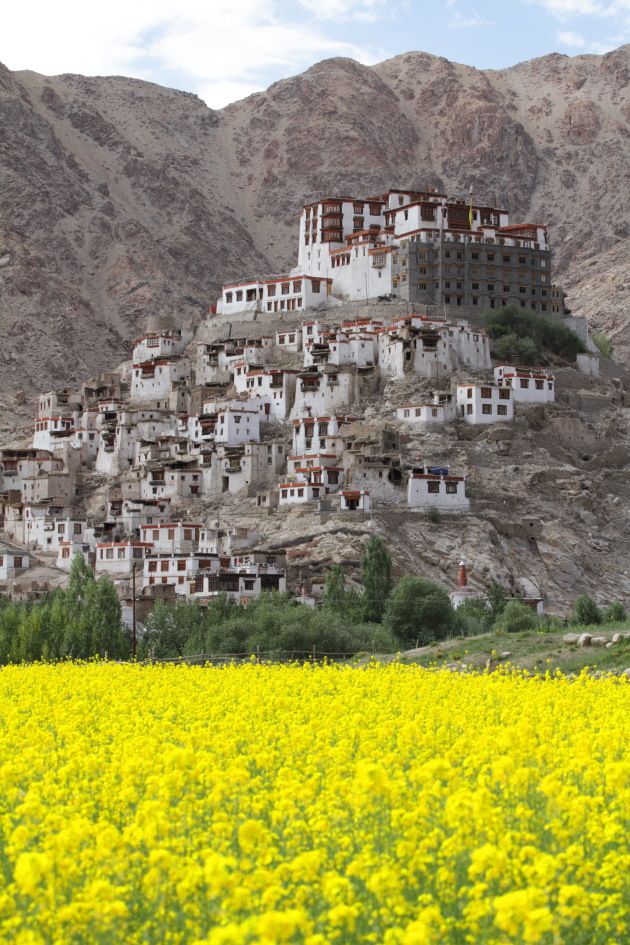
II. The Road to Reverence: Journey into the High Himalayas
The journey into Ladakh’s monastery-dotted highlands begins not with a step, but with a surrender. A letting go of speed. Of noise. Of control. The roads that wind their way out of Leh, past the last hints of urban life, carry you into a landscape shaped by wind, prayer, and time itself.
As our vehicle climbed higher, hugging cliffs and dipping into dry riverbeds, I found myself surrounded by a geography so bare, it felt otherworldly. There were no forests here, no chirping birds or babbling brooks. Just silence. And sky. And the occasional golden stupa gleaming on a ridge, like a beacon for wandering souls.
My driver, Sonam, spoke little. But every once in a while, he would gesture—to a ridge line, a cluster of whitewashed buildings clinging to a mountain slope, or a flock of Himalayan blue sheep darting across the scree. “That one,” he said once, pointing to a distant structure, “is Rizong Monastery. The most silent one.”
There is a poetry to the way monasteries are placed here. Not built on flat ground, but elevated—as if to remind us that sacredness is something we reach for. The roads are not easy. Some are barely wider than the car, flanked by thousand-meter drops. And yet, in that movement through altitude, something inside shifts. As you ascend physically, you descend inwardly.
We passed prayer wheels turned by the wind alone, their mantras spinning into the sky. At bends in the road, mani walls carved with Tibetan script stood like ancient whispers frozen in stone. Shepherds waved from distant fields, their flocks the only softness in the otherwise lunar terrain.
This was no ordinary road trip. It was a pilgrimage of presence. Each mile taking me further from signal, from schedule, and from the self I thought I had to be.
By the time we reached the steps of Thiksey Monastery, the sun was curling behind the peaks, casting long shadows across the valley. My ears rang—not from noise, but from the intensity of stillness. The world had not fallen quiet. It had simply returned to its original sound.
In this land, the road itself is sacred. Every curve invites reflection. Every climb draws you closer—not just to the monastery, but to something inside yourself that still remembers how to listen.
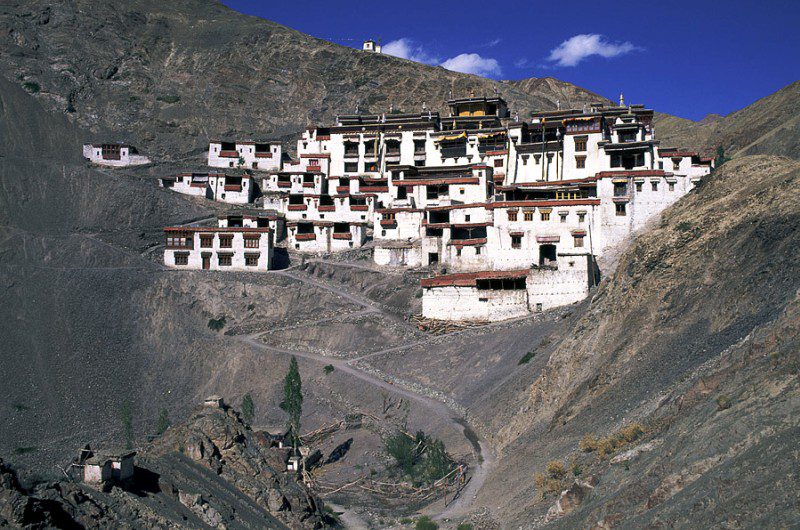
III. Thiksey at Dawn: A Conversation in Chants
The cold came first—sharp and honest, wrapping itself around my scarf as I climbed the final steps to Thiksey Monastery. In the pale light before sunrise, the vast Indus Valley below lay hushed, as though the world had collectively paused to breathe. Above me, the whitewashed tiers of the monastery glowed faintly, catching the first suggestion of day.
Inside, the air was thick with juniper smoke. A low murmur echoed through the ancient halls—monks gathering in the assembly room, their maroon robes brushing against centuries-old stone. I followed quietly, drawn not by curiosity, but by something older, more instinctual. A longing to sit in stillness among those who had mastered the art of silence.
We were a small group: a Dutch couple, a German solo traveler, and myself. No one spoke. The monastery didn’t ask for words. It asked for presence. As we removed our shoes and entered the main hall, the chants had already begun—deep, guttural, and rhythmic. Not loud, not dramatic. Just steady. Anchored.
The sound didn’t fill the room; it grounded it. It moved like water across the stone floor, seeping into every crevice of my mind, washing away the noise I didn’t know I had brought with me. There, beneath the golden gaze of a massive seated Buddha, I felt time unravel.
A young monk, no more than ten, moved between rows of elder lamas, offering butter tea with a concentration that rivaled any ceremony I had witnessed. His movements were deliberate, careful. Sacred. I took the warm cup between my hands, the taste salty, rich, unfamiliar. It was nourishment, but not just for the body.
As the sun rose, its light spilled through high lattice windows, painting the room in soft gold. Dust danced like silent prayers. The chants continued, undisturbed, as if the monastery breathed with the rhythm of the earth itself.
This was not a spectacle. It was not curated for visitors. It was a living ritual, a conversation between the seen and unseen. And somehow, simply by being there, I was part of it. Not as a tourist. Not even as an observer. But as a witness to a deeper language—one spoken in vibration, in warmth, in stillness.
Outside, the world waited. But for a little while longer, I remained in that sacred breath between day and night, where everything—stone, chant, tea, silence—had meaning.
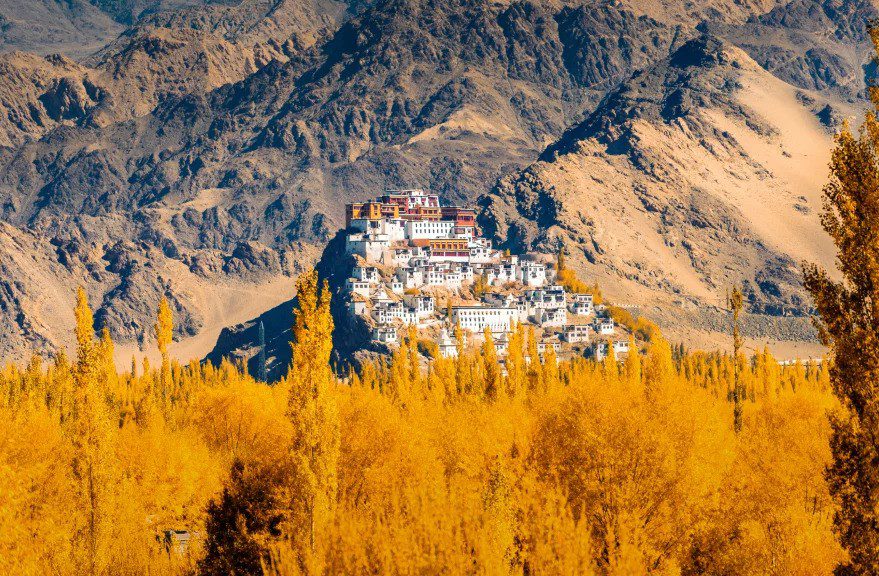
IV. The Painted Silence of Alchi Monastery
The journey to Alchi Monastery is not measured in distance, but in centuries. Unlike the towering gompas that cling dramatically to cliffs, Alchi rests low and humble beside the quiet currents of the Indus River. Its walls do not rise to meet the sky—they fold inward, as if to cradle the secrets they keep.
As I stepped into the shaded courtyard, the air grew denser, not with sound, but with the weight of memory. Time behaves differently here. The wind slows. Even the birds outside seem to quiet themselves in reverence. And within these walls lies one of Ladakh’s most treasured offerings: eleventh-century murals whose pigments have whispered across generations.
Inside, where sunlight barely intrudes, I was met by a constellation of painted eyes. They gazed from every surface—Bodhisattvas, wrathful deities, mandalas spun with infinite care. No guidebook could prepare me for the emotional gravity of that moment. The colors, though aged, glowed with a kind of inner light. Saffron, lapis, malachite—minerals made sacred through brushstroke.
These were not just paintings. They were prayers. Each line curved with compassion, each form vibrating with presence. In their gaze, I felt both seen and forgiven. Alchi does not overwhelm. It enfolds. There are no grand ceremonies here, no gongs or processions. Only the hush of painted breath and the crackle of old wood underfoot.
A local monk, soft-spoken and gentle-eyed, guided me through the inner chambers. He didn’t speak of technique or chronology. Instead, he told stories—of the artist who arrived from Kashmir, of villagers who helped grind the pigments, of pilgrims who wept quietly before these sacred walls. In his voice, I heard the continuity of devotion.
I lingered longest in the Sumtsek temple, where a towering figure of Vairochana sits in cosmic stillness. His gaze neither commands nor invites—it simply is. And in that timeless moment, I felt the noise within me loosen. Not disappear, but dissolve, like silt settling in clear water.
Outside, the Indus shimmered in late morning light. Children’s laughter echoed faintly from a nearby field. Life had resumed its rhythm. But I carried something now—a residue of stillness, the kind that doesn’t fade, but waits patiently inside you, ready to rise when you most need it.
Alchi does not call out. It listens. And if you arrive in silence, it might just answer.
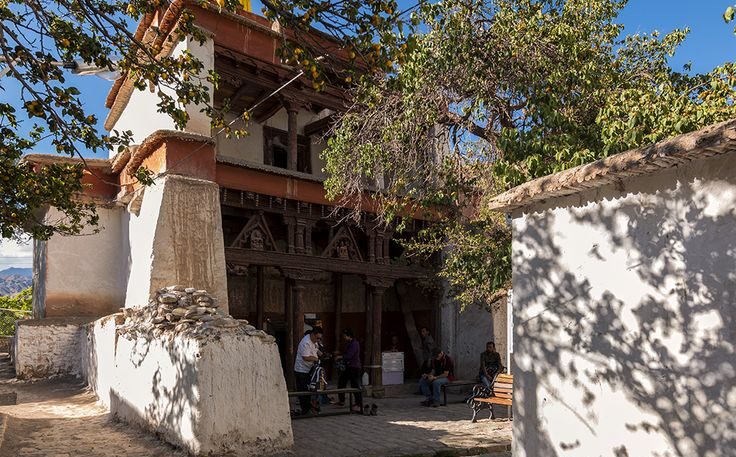
V. In the Shadows of Hemis: A Sacred Refuge
Long before I saw Hemis Monastery, I felt it. It rose from the mountains like something conjured, half stone, half spirit. Its vastness doesn’t shout—it looms quietly, built into the folds of a gorge that seems made not for tourists, but for retreat.
The morning I arrived, clouds floated low over the valley, casting soft shadows over the white-and-ochre walls. A procession of barefoot monks passed silently before me, their eyes lowered, their pace unhurried. They were not performing. They were simply living within the rhythm of devotion.
Hemis is the largest and wealthiest of Ladakh’s monasteries, known to most travelers for its colorful Hemis Festival. But I did not come for the festival. I came for what exists between the celebrations—the quiet heartbeat of a monastery that breathes even when no one is watching.
Inside, the halls are cavernous, their ceilings supported by time-blackened pillars and the soft chant of age. Butter lamps flicker against ancient thangkas, their flames casting momentary life into sacred silk. Here, ritual and routine blur into one. The sweeping of the floors. The turning of pages. The boiling of tea. Nothing is rushed, and therefore, everything is meaningful.
In a side chapel, an elderly monk sat in silence beside a window. Light played across his face as he thumbed a mala bead by bead, unmoved by my presence. I sat across from him for a long time, not asking questions, not seeking answers. Just being. And in that moment, I understood that sacredness is not always grand—it is often subtle, found in shadows, in pauses, in the softness of repetition.
Later, I was invited to the monastery kitchen. A young monk stirred a massive pot of lentils while humming quietly. Others peeled vegetables, laughed gently, and passed warm bread with soot-stained hands. Hospitality here was not a ritual—it was a reflex.
As I stepped back into the courtyard, I looked up toward the monastery roofs, where prayer flags danced in the mountain breeze. It struck me then: Hemis does not try to impress. It simply endures. And in doing so, it offers a kind of sanctuary not just for monks, but for anyone in search of a softer, slower world.
In its shadows, I found light. The kind that doesn’t blind, but guides.
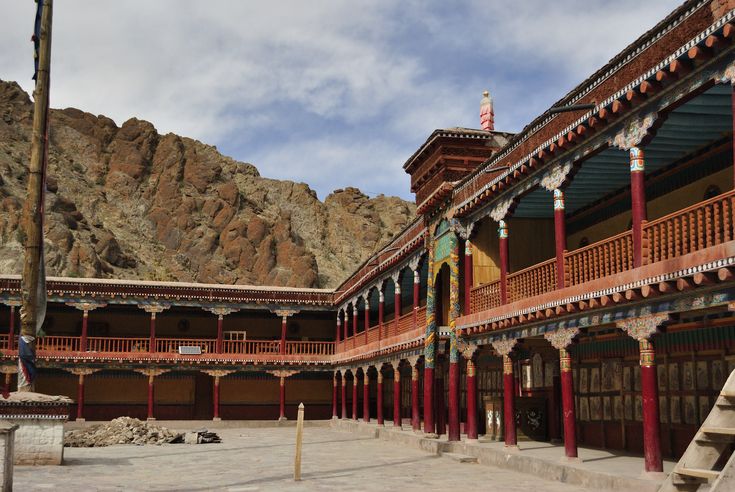
VI. Moments Between the Monasteries: The Poetry of the Journey
Not all sacredness is enclosed in walls. Sometimes, it lingers in the spaces between. In Ladakh, the journey from one monastery to another is rarely a straight line. The roads meander like thought—pausing, doubling back, catching their breath. And so too does the soul, if you let it.
After leaving Hemis, we drove without urgency. No destination pressed us forward, only the promise of discovery. The mountains softened as we descended, trading sharp peaks for ochre slopes brushed with wind. On a bend in the road, we passed an apricot orchard blooming against the impossible stillness of stone. The petals shimmered like prayer flags in slow motion.
We stopped in a tiny village—just a scattering of homes, a few goats, the faint sound of a radio playing folk songs from across the valley. An elderly woman sat on her rooftop, drying herbs in the sun. She smiled without hesitation and beckoned us up. With a handful of dried apricots and a nod, she reminded me of something I’d nearly forgotten: hospitality needs no language.
We spoke in gestures and laughter. She pointed toward the mountains, telling stories with her hands. I listened not with my ears, but with presence. That, I’ve learned, is the currency of travel that truly transforms.
Later, I wandered alone along a narrow footpath lined with mani stones and wild lavender. There was no sound but my footsteps, and the occasional flutter of wings. I stopped beside a mountain stream and sat, letting the cold wind sting my face. In that stillness, I realized that not every journey needs direction. Some are meant simply to be walked, quietly, with no thought of arrival.
This is the poetry of Ladakh—not grand vistas or monumental temples, but the invisible thread of calm that weaves everything together. It is found in the silence between chants, the smiles of strangers, the dust that clings to your boots.
For those who rush, these moments go unnoticed. But for those who travel slowly, with soft eyes and an open heart, they become the very heart of the pilgrimage.
Between the monasteries, there is a different kind of wisdom. One that doesn’t teach, but reminds. And in those reminders, whispered on the wind, we begin to remember who we are.
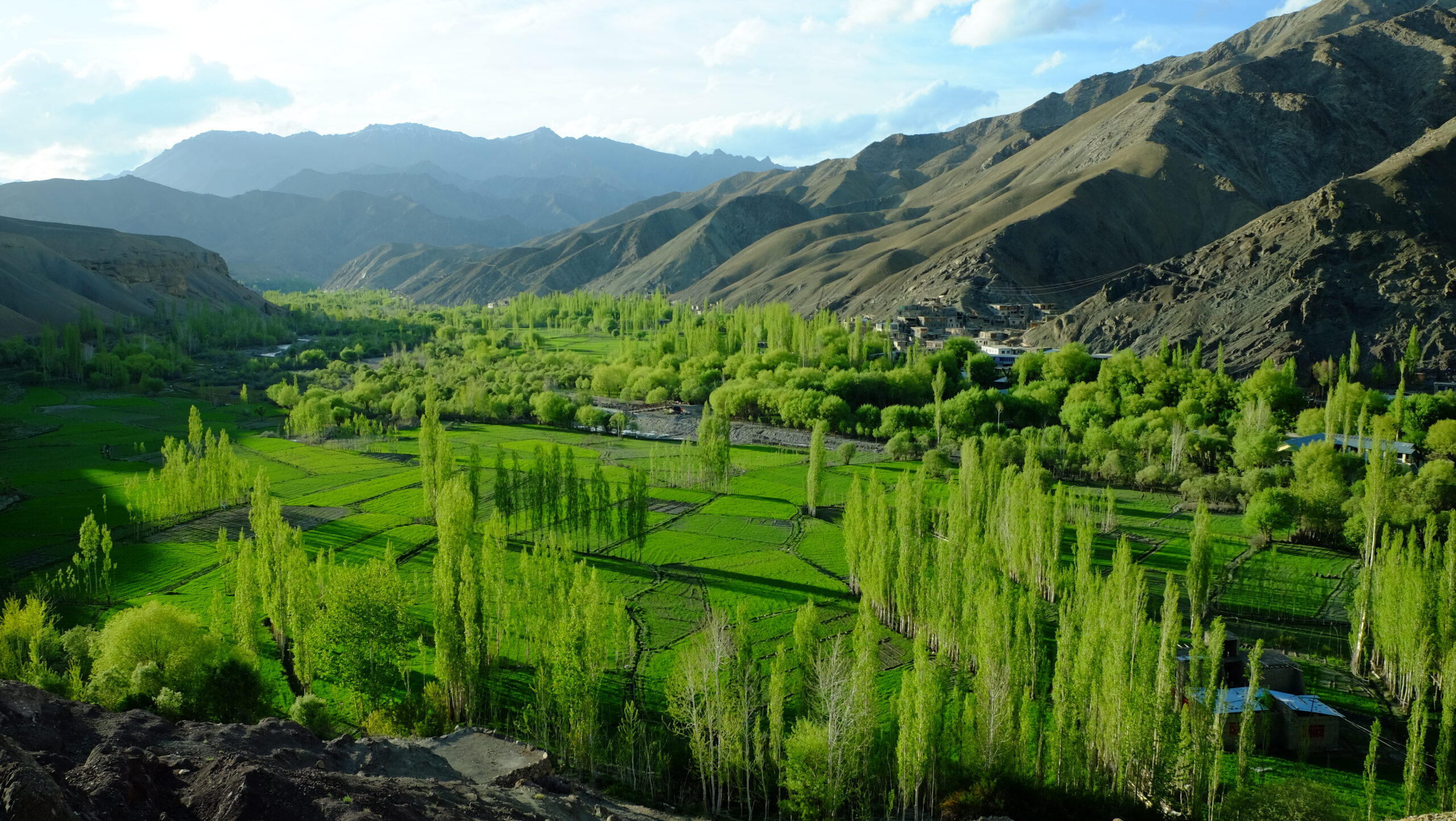
VII. Practical Whispers: A Gentle Guide for the Soulful Traveller
Not every journey needs a map—but a few quiet tips can make the path smoother, especially in a place as rarefied and remote as Ladakh. This is not a checklist, but rather a collection of gentle whispers—drawn from experience, offered with warmth—for those who wish to travel not only far, but deep.
When to Go: The best times to visit Ladakh’s monasteries are late spring (May to early July) and early autumn (September). During these windows, the high passes are open, the skies are clear, and the monasteries are quietly alive without the crowds. June offers vivid colors and ceremonies, while September brings cooler air and golden silence.
What to Wear: Modesty is not a restriction here—it is a form of respect. Bring warm layers, as even in summer, the air can turn crisp in the early mornings. Shoulders and knees should be covered when entering monasteries. A shawl or scarf is always useful—for warmth, for shade, for reverence.
How to Be: The monasteries are not monuments. They are living homes of prayer, study, and rhythm. Enter quietly. Walk slowly. Photography is allowed in some areas but always ask first. And when monks are in ceremony, observe from a respectful distance—your presence should be as soft as a breath.
Where to Stay: For a truly immersive experience, consider staying in local guesthouses or homestays near villages like Alchi, Stok, or Hemis. The hospitality is often simple, but sincere. You’ll wake to the smell of butter tea and the sound of prayer flags fluttering outside your window. And in that simplicity, you’ll find more than comfort—you’ll find connection.
How to Get There: Leh is the entry point to Ladakh, accessible by air from Delhi or Srinagar. From there, most monasteries can be reached by car within a few hours. Private taxis can be hired for the day, or longer journeys can be arranged through local guides and travel services. For the more adventurous, multi-day trekking routes connect many of these sacred sites.
Health & Acclimatization: Ladakh’s altitude is no small matter. Take your time. Spend at least 48 hours in Leh before venturing higher. Drink plenty of water. Avoid alcohol and caffeine for the first couple of days. Listen to your body—it will tell you how ready you are to climb.
Offering & Gratitude: It is customary (though not required) to offer a small donation when visiting a monastery. But more important than coins is presence. A bowed head. A quiet heart. A whispered “thank you” to a place that gave you more than you expected.
Let your travels through Ladakh be guided not just by GPS, but by grace. These mountains are more than geography. These monasteries are more than history. They are living invitations—to pause, to listen, to feel.
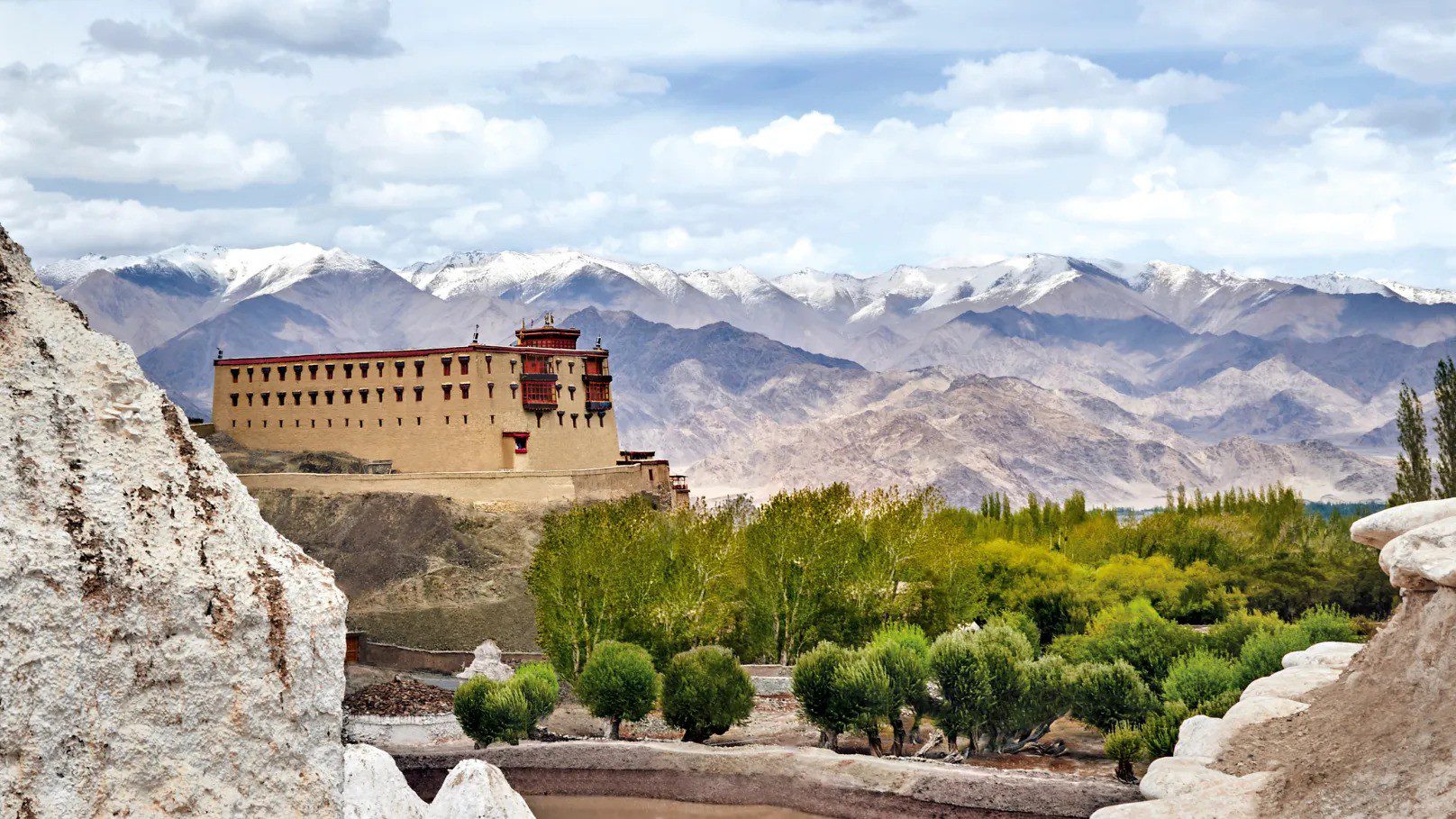
VIII. Conclusion – Leaving Without Leaving
When I returned from Ladakh, I expected the silence to end. I thought the noise of the world would crash back in—emails, city horns, hurried footsteps on pavement. And yet, something stayed with me. Or perhaps, something within me had changed.
It wasn’t just the memory of towering monasteries or the shimmer of apricot blossoms against stone. It was subtler than that. It was the quiet pause before speaking. The warmth of tea cradled between hands. The way I noticed shadows dancing on my bedroom wall as if they were echoes of prayer flags.
Ladakh had not given me answers. It had offered something far more lasting: a new way of listening. To the world. To others. To myself.
In a time when so much travel is about consuming—checking boxes, capturing moments, curating experiences—this journey reminded me of something ancient. That the truest journeys do not end at the airport. They continue, quietly, in how we rise in the morning, in how we greet strangers, in how we sit with ourselves when no one is watching.
If you choose to walk the path between Ladakh’s silent sanctuaries, do not go looking for revelation. Go ready for presence. Let the chants echo without translation. Let the silence be enough. And when you return, carry that hush like a small stone in your pocket—something to hold when the world feels too loud.
You may leave Ladakh, but the silence follows. It lingers in your breath, in the spaces between thoughts, in the way you now understand that stillness is not emptiness—it is presence.
And so, I left. But I didn’t really leave. Part of me is still there, somewhere between the golden light of Thiksey at dawn and the painted eyes of Alchi’s ancient walls, listening. Always listening.
About the Author
Elena Marlowe is a poetic travel columnist whose work explores the quiet intersections between landscape, spirit, and story. With roots in Europe and a heart attuned to the Himalayas, she seeks not just destinations, but revelations. Her journeys favor stillness over spectacle, and her words invite readers to pause, breathe, and listen deeply.
Through her columns, Elena shares soulful encounters from the world’s most sacred corners—written with the curiosity of a wanderer and the tenderness of a listener. Ladakh, to her, is not just a place on a map. It is a space in the soul.


